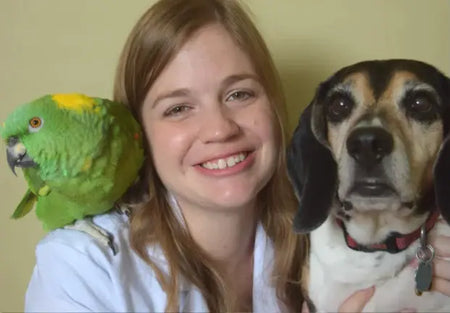In This Article
In veterinary medicine, we see a variety of gastrointestinal disorders, a common disorder seen in cats is constipation. Constipation is absent or infrequent defecation, often associated with difficulty and discomfort. Clinical signs of constipation include abdominal pain, discomfort or straining while defecating, vomiting, weight loss, or decreased appetite. Some patients with chronic constipation can develop megacolon which is reduced motility and dilation of the colon due to chronic constipation. Constipation can occur from orthopedic, neurologic, or idiopathic conditions (2). A retrospective study found that constipation was more prevalent in older, overweight cats and cats with a diagnosis of chronic kidney disease or previous episodes of constipation. (3)
Managing constipation depends on the underlying cause. Often, clinicians use a multi-modal approach when relieving the clinical signs. Medical management can incorporate laxatives, pro-motility medications, enemas, fluid administration (for hydration), or additional fiber supplementation.
Digestion & Gastrointestinal Motility
Gastrointestinal motility, the process by which food travels through the digestive tract, depends on several intertwined processes in the body. These include the central and enteric nervous systems, the immune system, and the gut luminal environment. The enteric nervous system is specific to the gastrointestinal tract. The gut luminal environment consists of the bacteria which inhabit the gut, also known as the microbiota, and their fermentation products. (1) A disruption in any of these components can affect gastrointestinal transit times. In a study performed on germ-free mice, data revealed that colonization of the gastrointestinal tract with microbiota was an important contributing factor to the maturation of the enteric nervous system. (1) Another study in germ-free mice revealed that the germ-free mice lacking microbiota had increased GI transit times compared to wild-type mice. The mechanism of how the microbiota influence GI motility is still unknown, but previous studies support the idea that the microbiome is an important player in GI motility. (1)
Could Probiotics Be A Positive Influence?
A pilot study was performed to examine the effects of a multi-strain probiotic (SLAB-51) supplementation on cats with constipation or megacolon. While the sample size was small, it examined 10 cats with a previous diagnosis of constipation, three of which had megacolon.
During the 90-day trial, clinical, microbial, and histological parameters were recorded. The study concluded that supplementation with the multi-strain probiotic (SLAB-51) resulted in significant improvement of the clinical signs associated with constipation (2).
They also noted histological improvements within the gut mucosal lining over the course of the study indicating that certain cells may play a specific role in motility (2). At the end of the trial, Lactobacillus and Bacteroides populations were significantly more prevalent in the microbiome of constipated cats.
This is similar to a previous study in humans revealing that patients with constipation had lower numbers of Lactobacillus and Bifidobacterium in their microbiota population. (2)

In Summary
While there are a lot of factors involved with the regulation of GI motility, probiotics may be a positive influence in the management of constipation.
Sources
- Dimidi, Eirini, et al. “Mechanisms of Action of Probiotics and the Gastrointestinal Microbiota on Gut Motility and Constipation.” Advances in Nutrition: An International Review Journal, vol. 8, no. 3, 2017, pp. 484–94. Crossref, doi:10.3945/an.116.014407.
- Rossi, G, et al. “Effects of a Probiotic (SLAB51TM) on Clinical and Histologic Variables and Microbiota of Cats with Chronic Constipation/Megacolon: A Pilot Study.” Beneficial Microbes, vol. 9, no. 1, 2018, pp. 01–10. Crossref, doi:10.3920/bm2017.0023.
- Benjamin, Sarah E, et al. “Retrospective Evaluation of Risk Factors and Treatment Outcome Predictors in Cats Presenting to the Emergency Room for Constipation.” Journal of Feline Medicine and Surgery, vol. 22, no. 2, 2019, pp. 153–60. PubMed, doi:10.1177/1098612x19832663.


